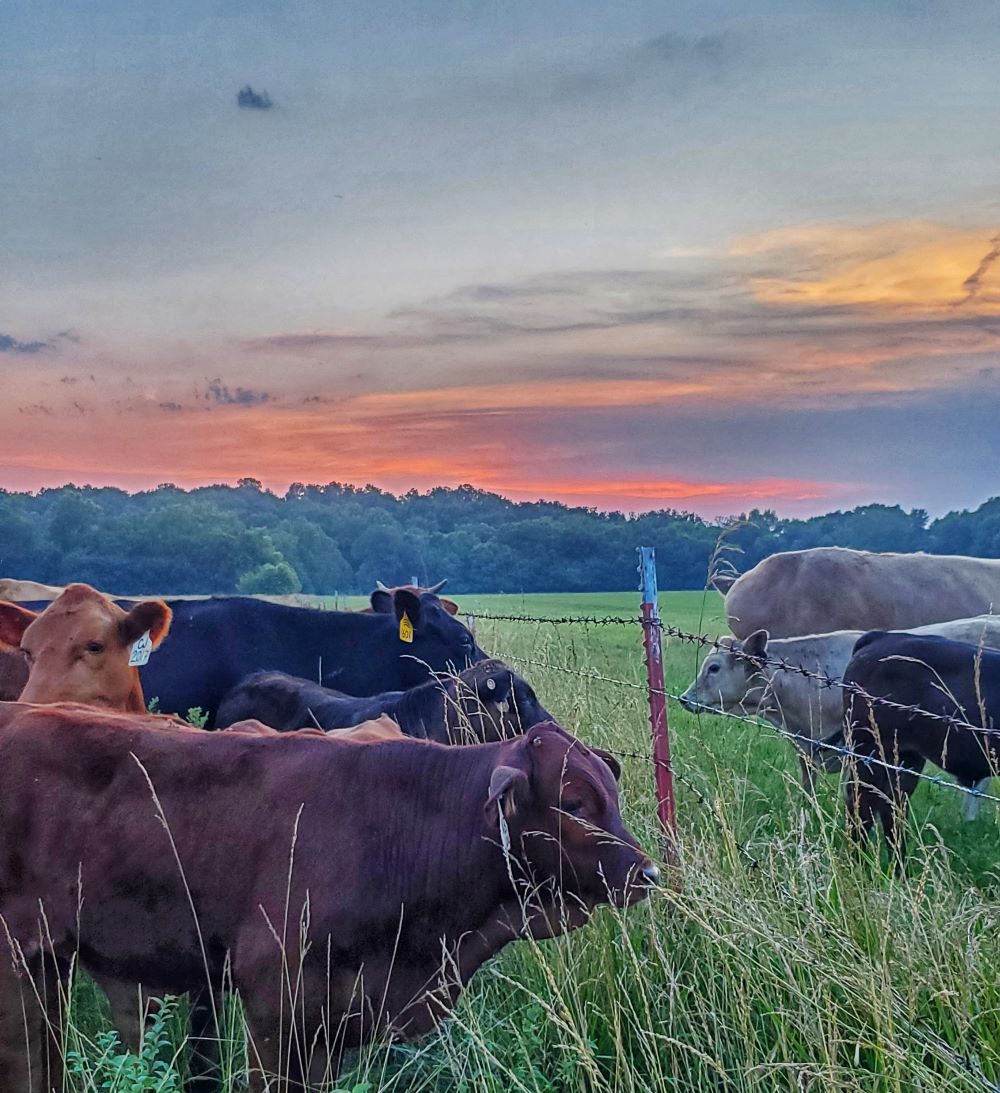
Grass Finished? Corn Finished? Or what?
I just had to share this picture! The sunsets in MO are hard to beat! This picture was taken right after getting the neighbors bull out of our pasture and back into his.
I wanted to cover something that has been coming up quite a bit lately. To be honest, I have avoided this blog for awhile now, I don’t want to disappoint anyone because we don’t really fit neatly into the box of grass finished regenerative grazers. However, something I have been learning lately is that no one really fits neatly into any box. We all have our own ideals and sometimes they line up with a movement or stereotype. Sometimes they don’t.
We are very serious about regenerating the land. That is why we move our cows daily and are in the process of figuring out how we will move them 6x a day to regenerate the land that much faster. One might think that because we are so into rotational, intensive grazing that we would also be into grass finished beef. Yet, we aren’t. There are a few reasons why.
The biggest reason is that the most prominent grass that grows in our pasture is Kentucky 31 fescue. It is not native to Missouri, and it is quite toxic. It was planted here because it is very resilient and almost impossible to kill, and it grows almost year around. One of the problems with it, is that it has an endophyte in it that raises the animal’s temperature and inflammation in the animal. There are some animals more affected than others and that is known as fescue toxicity. In some cases, a cow can lose her foot from it, called fescue foot. As you can imagine that level of inflammation is not ideal for growing animals into a finished beef.
Another issue with it, is that is does not taste good. About 5 years ago we processed a beef for us personally and we had just pulled the heifer off the pasture in the spring when the fescue was belly deep. Sadly, her meat was so awful tasting that the dogs ended up eating well for the next few months. It was a good, hard lesson for us! We want to raise the highest quality meat possible and that just is not possible with grass finished beef on fescue. There are certain times of the year that the fescue is less toxic, and the animals do okay on it because the endophyte doesn’t come into play until the grass reaches phase 3. It might be possible to finish beef only in the fall and still have a tasty product. However, we want to be able to supply you with consistent flavor and tenderness all year around.
So that is why we researched and experimented with our own beef over the next couple years. That has led us to decide that an animal finished for at least 90 days on alfalfa and non-GMO corn gives us amazing flavor, tenderness, and consistency.
This is why we don’t neatly fit into any box. Our beef isn’t in a feedlot, they still have pasture, but it is the same pasture and they do get fed every day, twice a day. We also aren’t totally grass finished. I don’t know that there is a label for what we are. Maybe just dang good beef?
If you have any questions, please feel free to comment or email me. Questions will help me write future blogs!

2 comments
As a very experienced past rancher, I can say that your post is completely accurate. Todays commercial cows (aka Angus, etc etc) have been bred from the 60’s to be finished on corn. They do not finish well on grass. Although todays fad may be grass finished, the meat will be tough, tasteless or worse, and very unappetizing. The ONLY way around this is to purchase very rare, very expensive stock bred to finish well on grass. OR to finish on non-gmo corn. Alfalfa added is an incredible yet expensive addition. Nobody feeds alfalfa. Too $$$. You are doing the absolute best to produce quality meat.
Thanks for the information you shared on grass feeding and fescue. The average person doesn’t even think about these things. I feel a bit more educated!